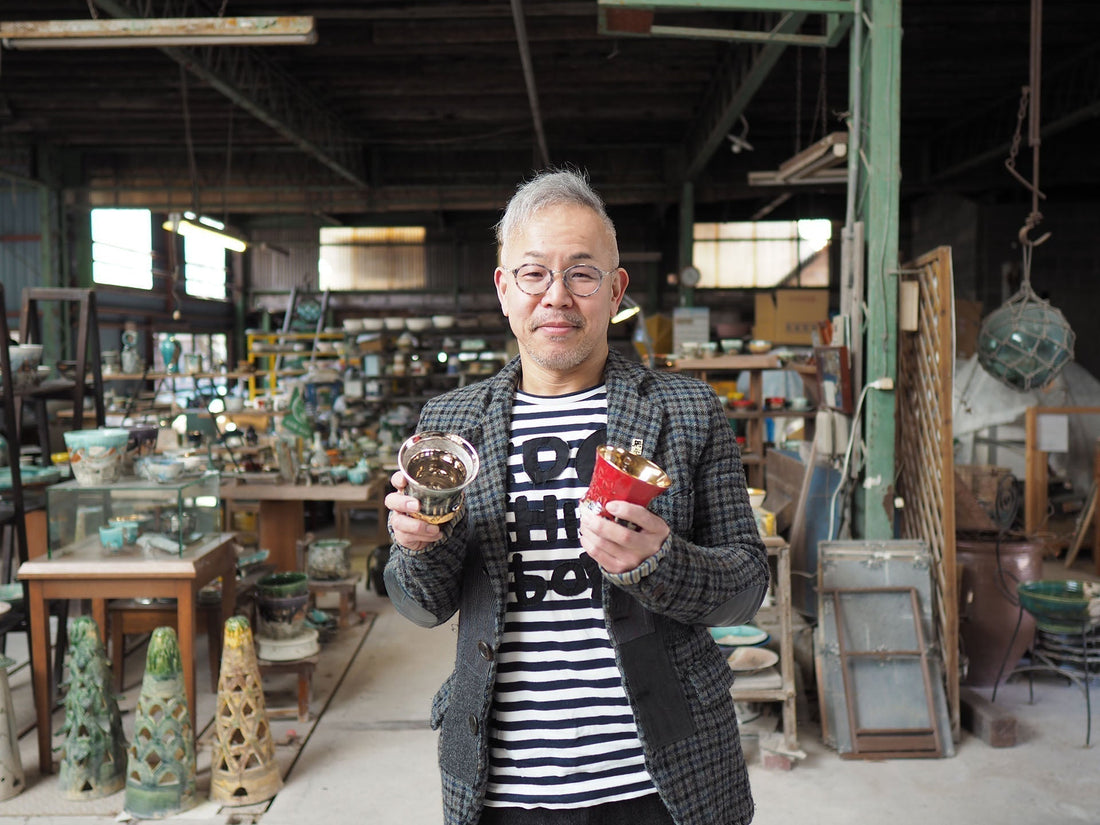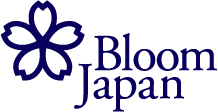
Interview with Hideki Hayashi of Kakurin Kiln
The fascinating world of Mino ware with its unique colors and techniques
Profile/Ceramics history
(Hayashi Hideki)
Born in Dachi Town, Toki City, Gifu Prefecture in 1974. After graduating from the Department of Architecture, Faculty of Science and Technology, Meijo University in 1996, he worked for a major general contractor before returning to his hometown of Dachi. He studied ceramics at the Ceramic Science and Art Department, Special Course, Tajimi Prefectural Tajimi Technical High School, graduating in 2001. He joined the Mino Ceramic Art Association in 2014, and in 2018 was invited to Faenza, Italy at the request of Toki City. In 2023, he received the 9th Mino Ceramic Development Tomoko Award. He is currently working on pottery at his family's home, Kakurin Kiln. He is a director of the Mino Ceramic Art Association.
History of pottery
- 2014
- Joined the Mino Ceramic Art Association
- 2018
- Invited to Faenza, Italy at the request of Toki City
- 2023
- 9th Mino Ceramic Development Tomoko Award Winner
Vessels decorated with colorful glazes
Red, yellow, Turkish, pink, purple... Kakuringama is lined with colorfully glazed bowls, plates, and pots.
The color names are written in katakana because Hideki Hayashi felt that it would be easier to understand. The vessels displayed on well-used shelves, stands, and chests of drawers have an atmosphere reminiscent of a garage or art gallery overseas.
We visited Hayashi Hideki, who offers tableware that gives off a "comforting warmth."


At Kakurin Kiln, you can see the works in a gallery-like workshop (please check in advance).
The roots of pottery were cultivated in Toki City, the birthplace of Mino ware
Toki City, located in the southeastern part of Gifu Prefecture, is a production center of Mino ware. In particular, in Dachi Town, known as the "town of rice bowls," ceramic production has taken root as a local industry.
Born to a father who ran a pottery business, Hideki Hayashi grew up in an environment where pottery was a familiar presence from an early age.
His elementary and junior high schools had kilns on campus and offered pottery classes. He also had a part-time job at a pottery factory during his student days, so pottery was a part of his everyday life.
However, in an era when mass production was the norm, seeing his father firing pottery in a four-cubic-meter kiln from morning to night, he says, "I never thought about taking over the family business." Even as a child, he understood that it was a tough world.

From the construction industry to the world of pottery
Hideki, who loved making things, also became interested in architecture, and after graduating from the Department of Architecture, he got a job at a major general contractor in Tokyo.
However, drawing lines on design drawings did not give him the feeling that he was actually "building a building," and he felt something was off. In order to be more directly involved in architecture, he considered changing jobs to a small architectural firm and returned to his hometown.
Then, at a pottery class that a friend invited him to, he felt a sense of comfort when he touched the clay. He was so engrossed in the pottery that he didn't have to think about anything, and he experienced the joy of creating shapes with his own hands.
He recalls that his parents' home had all the materials and kilns, which led him to become increasingly absorbed in pottery.

Learning at the Department of Ceramic Science and Art and a turning point
Hoping to learn more about pottery, he enrolled in the specialized course in ceramic science and art at Gifu Prefectural Tajimi Technical High School .
The two years I spent with classmates from diverse backgrounds, including people with work experience, people studying after retirement, and students from far away, were very stimulating.
"I envied the young people in their teens and twenties who were absorbed in making things," says Hideki. He realized that he couldn't shake off the mindset of "how many items to produce by what time" and was always thinking about productivity.
After graduating, he took over the family business as the fourth generation, shifting from mass production to "small quantities, many varieties." He also added "Kakurin" to the company name "Kakubayashi Pottery Factory," and established a system to produce elaborate household utensils as a pottery manufacturer .

A unique style that makes use of an architectural perspective
Hayashi Hideki's work is characterized by "a striking combination of patterns and colors."
Alphabet-like patterns, bold straight lines, and geometric designs are arranged in a unique balance, and combined with the special glaze, they create an artistic impression that evokes both Japanese and Western elements.
His unique technique of "line engraving" is based on his experience in the construction industry . When he was drawing the blueprints, he was conscious of whether he was drawing sharp lines. In order to draw sharp lines on the soft side of the clay, Hideki also puts great effort into using the right tools.
She sharpens and arranges the tips of design knives and carving knives to create the lines she likes. To create continuous, thin lines, she also created a homemade tool by lining up several sewing needles side by side on a small board and wrapping them in tape. She also made a punch (a pottery tool used to make round holes) by sharpening the ribs of a cut umbrella. By combining these engraved lines with rounded bumps inspired by picorn holes (the holes left after removing concrete forms), she creates gorgeous patterns that are instantly recognizable.
"My work tends to have a lot of directional variations, lines, bumps, and other things I like," says Hideki with a smile. This unique approach results in unique patterns that are instantly recognizable.

Each piece is carefully decorated with a distinctive pattern.
A commitment to colorful glazes and blue-and-white coloring
The reason for incorporating bright reds and yellows, which are rare among ceramic works, is that they are "calculated as accent colors that will enhance the other works."
Hideki describes the mixing of glazes as "science and infinity." Although there are materials that are no longer available and colors that cannot be reproduced, he sees this as "fate."
Above all, he has a strong desire to "pursue a transparent blue and pale blue color."

Aesthetic sense shared by fashion and pottery
Hideki's attention to detail is also evident in his fashion.
On the day of the interview, he was wearing a Comme des Garçons jacket, the design of which was meticulous down to the sleeves, collar, and buttons. He spoke of his deep admiration for designer Rei Kawakubo, suggesting that there is a common awareness between fashion and pottery as forms of self-expression.
He has attended art classes since he was a child, and his high aesthetic sense is reflected in his work, as he still places his brushes in paulownia wood boxes himself .
Hideki says , "I am conscious of creating pieces that people who pick up my pottery will recognize even if they don't know my name." The pattern, which resembles the alphabet, was inspired by the consonants of the alphabet. In order to create a continuous pattern that "looks like it was drawn," he says, "I tried various angles and placements until I arrived at the current balance." Some of the lines on the pieces represent his name, HDK. He says they are sloppy so as not to stand out, but he laughs, saying, "It's a manifestation of my desire for self-expression."

"Different from a ceramic artist" - Hideki Hayashi's philosophy
"I'm not a potter," says Hideki.
Pottery is not something to be appreciated, but something to be "used," which is why I believe it is different from art.
Pottery making and pottery art, family business and pottery making. Every day, he faces his own way of life while searching for a balance between the two.
Hayashi Hideki's works are imbued with the desire to "bring something comforting to the lives of those who pick them up."
(February 2025, Interview: Chika Shimura)
information
Tsuruin kiln
1919 Dachicho, Toki City, Gifu Prefecture, 509-5401




